
Douglas Murray’s Things Worth Remembering column is on hiatus this week. Douglas has spent his summer writing us searing pieces about assassination attempts and digging into the archives to find the speech that invented the Olympics. The man deserves a break! But don’t worry; he’ll be back in your inbox next Sunday.
In the meantime, we’re bringing you a fascinating piece of reporting from one of our brand new Free Pressers, Madeleine Kearns, who found herself wondering: Why are so many young Catholic women across America, showing up to church wearing a veil? It’s easy to dismiss them as superficial millennials, drawn to something that’s pretty (and trending on tradcath Instagram). But, Maddy reveals, their reasons cut to the very heart of why we worship. Here’s where faith and fashion collide.
Enjoy! —The Editors
“I definitely don’t feel like the odd woman out anymore.”
Nicole Moore, 30, wears a veil to church every Sunday. Sometimes called a mantilla, these sheer head coverings are usually made of lace or silk; Nicole’s is gray, with a floral-like pattern. Worn by women throughout the Catholic church’s history, chapel veils fell out of favor during the late twentieth century, but in recent years there’s been “an explosion of veiling,” says Moore, who attends St. Vincent Ferrer Catholic Church in Manhattan.
Her pastor, Father Peter Martyr Yungwirth, 39, tells The Free Press he has also noticed an increase in veiling over the last two decades. Indeed, Veils by Lily, a website that sells mantillas, has gone from filling 30 to 60 orders per month to an average of 900 in the last ten years. And it seems to be young Catholics driving the trend. “I have definitely noticed an increase of women, especially young adult women, wearing veils,” says Father Roger Landry, 54, Catholic chaplain of Columbia University. He interprets the veiling trend “as an attempt to be maximally reverent to God at Mass and in receiving Holy Communion.”
That may be the ultimate reason for veiling, but it’s not the only one. To better understand what’s behind the boom, I reached out to over a dozen Catholic women, ranging in age from 19 to 42, who choose to wear a veil to church.
Havens Howell, 26, of Virginia, tells me that donning the mantilla does indeed remind her that she’s entering a sacred space, “with things that are holy and don’t happen anywhere else.”
Initially at least, the appeal can be aesthetic. “I just thought it was really pretty,” Bernadette Patel, 27, of New York, says. Meanwhile Amanda Kengor, 22, from New York, tells me she began veiling because “everyone started doing it.”
Yet all the women I spoke to say veiling has become a profoundly meaningful religious practice in their lives.
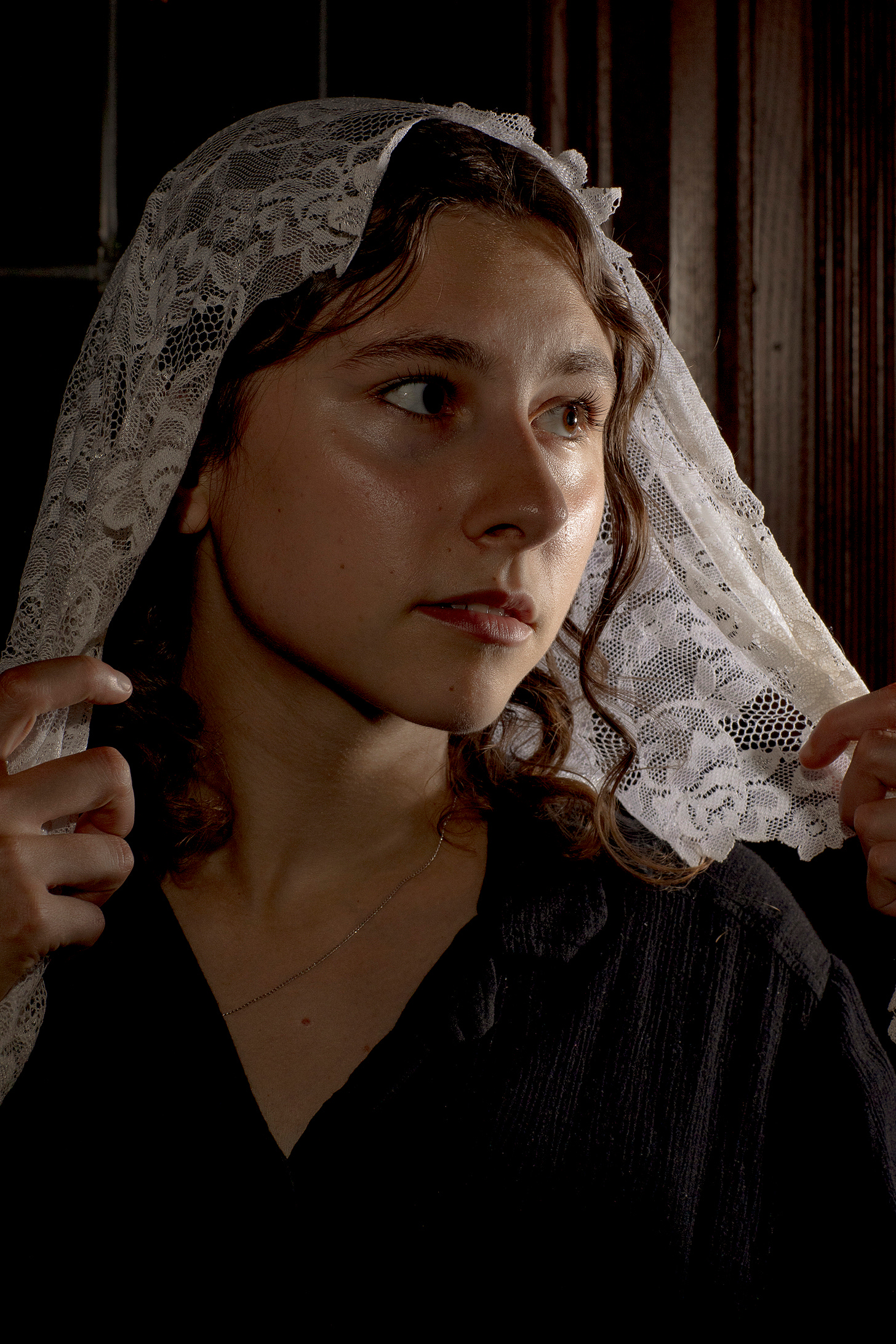
Veiling ceased to be the norm after the Catholic Church’s modernizing reforms of the 1960s, commonly known as “Vatican II”—which, among other things, placed restrictions on whether parishes could offer the Traditional Latin Mass (TLM).
In the following decades, these regulations were gradually relaxed. But the roots of the mantilla’s resurgence lie in 2007, according to Father Landry. That’s when Pope Benedict XVI increased younger generations’ exposure to the TLM by officially lifting the restrictions on it. Pope Francis reversed this decision in 2021. By that point, however, it had caught on. The year before, a survey found a “high volume of participation” in the TLM among 18- to 39-year-old practicing Catholics in the U.S.
Veiling at the TLM is the norm, but many women “just kept veiling,” Father Landry says, even when they attended the modern Mass.
Maria Grizetti, 42, a religion teacher at St. Vincent Ferrer’s all girls high school, explains that before Benedict XVI, “there was the Pope John Paul II generation that had grown up without” the TLM. Then that generation learned what worship was like before Vatican II. “They learn that their grandmother prayed this way,” said Grizetti, “and they’re like, ‘I want to pray like this.’ ”
She does not wear a veil herself, but several of her teenage students have recently approached her to ask where they might acquire mantillas.
The veil boom is organic—occurring neither at the direction of, nor in defiance to, church authorities. There is a social element to it. When Cora Scheib, 24, from Maryland, saw young college women veiling, she found it “intriguing and mysterious because I didn’t really know what requirements that you had to meet. Were they, like, part of a group?” When she realized there were no “requirements,” she bought herself a veil.
Kengor told me that most of her friends, and her sister, are “really traditional Catholics”—and when they started veiling, Amanda wanted to follow suit. It was only after she started wearing it that someone told her the veil had a scriptural basis.
In his first letter to the Corinthians, St. Paul instructs women to cover their heads, to both comply with contemporary standards of modesty and emphasize a distinction between the sexes.
“When I realized it was biblical,” Amanda said, “I was like, ‘Oh, well, there you go. That’s my reasoning.’ ”
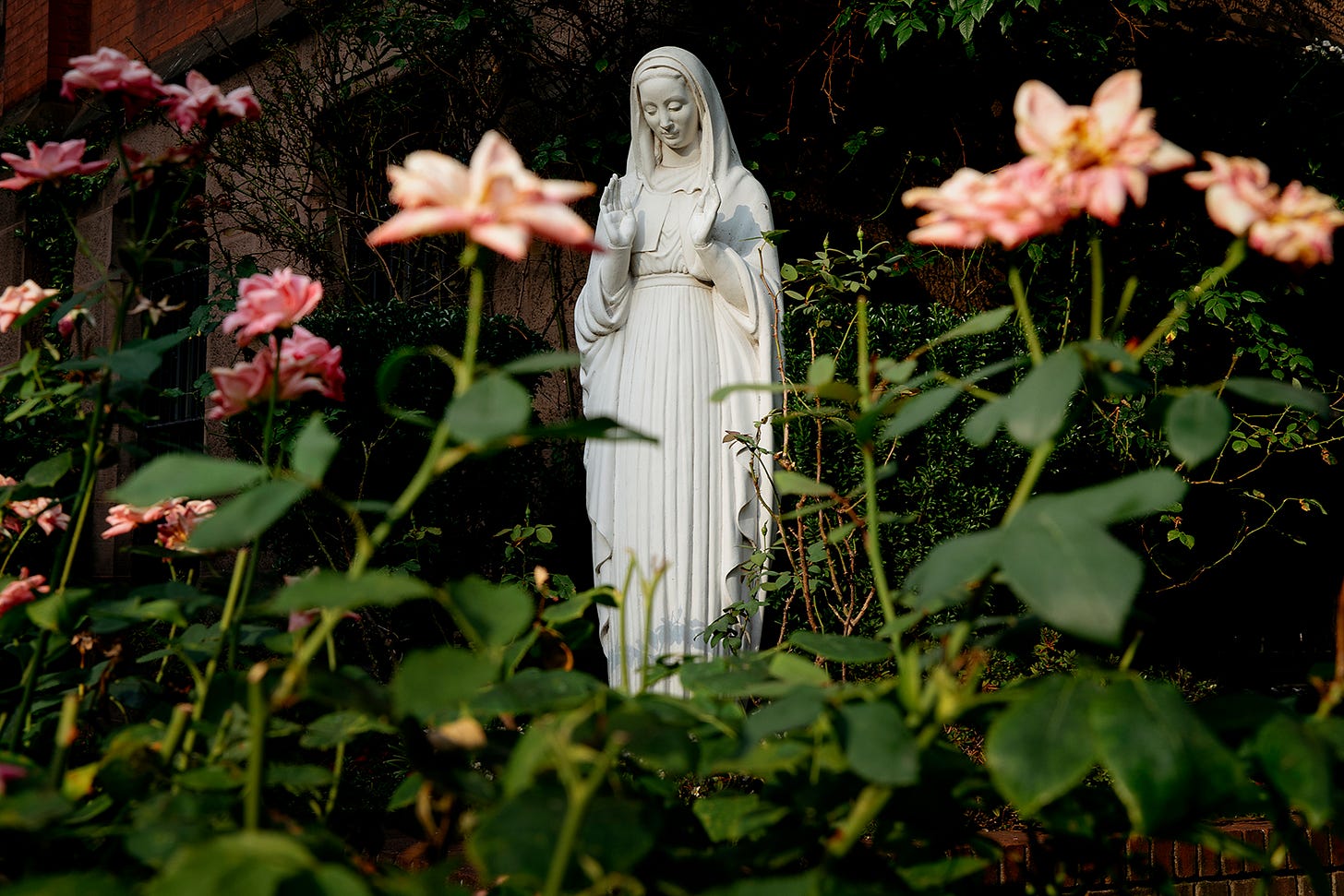
But over time, Amanda’s appreciation for veiling deepened. “I reached a point where I feel it’s a kind of mystical thing,” she said. For her, stepping into church and “putting on my veil just reminds me of the fact I’m in a different place. I don’t do this anywhere else.”
The same is true for Patel, who converted to Catholicism in 2016 when she was at college in California. She moved to New York in 2019. There, she saw other young, traditionally minded women veiling, which she thought was “pretty.” But after she got her own veil, she “fell in love” with it as a way to show that “Jesus is really present in the Blessed Sacrament”—that is, the bread and wine Catholics believe is transformed into Christ’s body and blood at Mass.
Now, she never leaves her apartment without her mantilla: “I always carry my veil, my phone, my keys, my wallet.”
Catholicism is experiencing a wave of nostalgia for an ancient, more solemn and reverent form of the religion—the kind that inspired Michelangelo to paint the ceiling of the Sistine Chapel.
Even many Catholics who attend the modern Mass remain attached to the pre-Vatican II practices and help to preserve some of the church’s reverent traditions. Among the laity, this might mean wearing formal attire instead of jeans, or kneeling at communion and having the priest place the host directly on one’s tongue rather than standing and receiving by hand. Among priests, it might mean facing the altar as opposed to the congregation, or insisting on male-only altar servers.
And among women—it might mean wearing a veil.
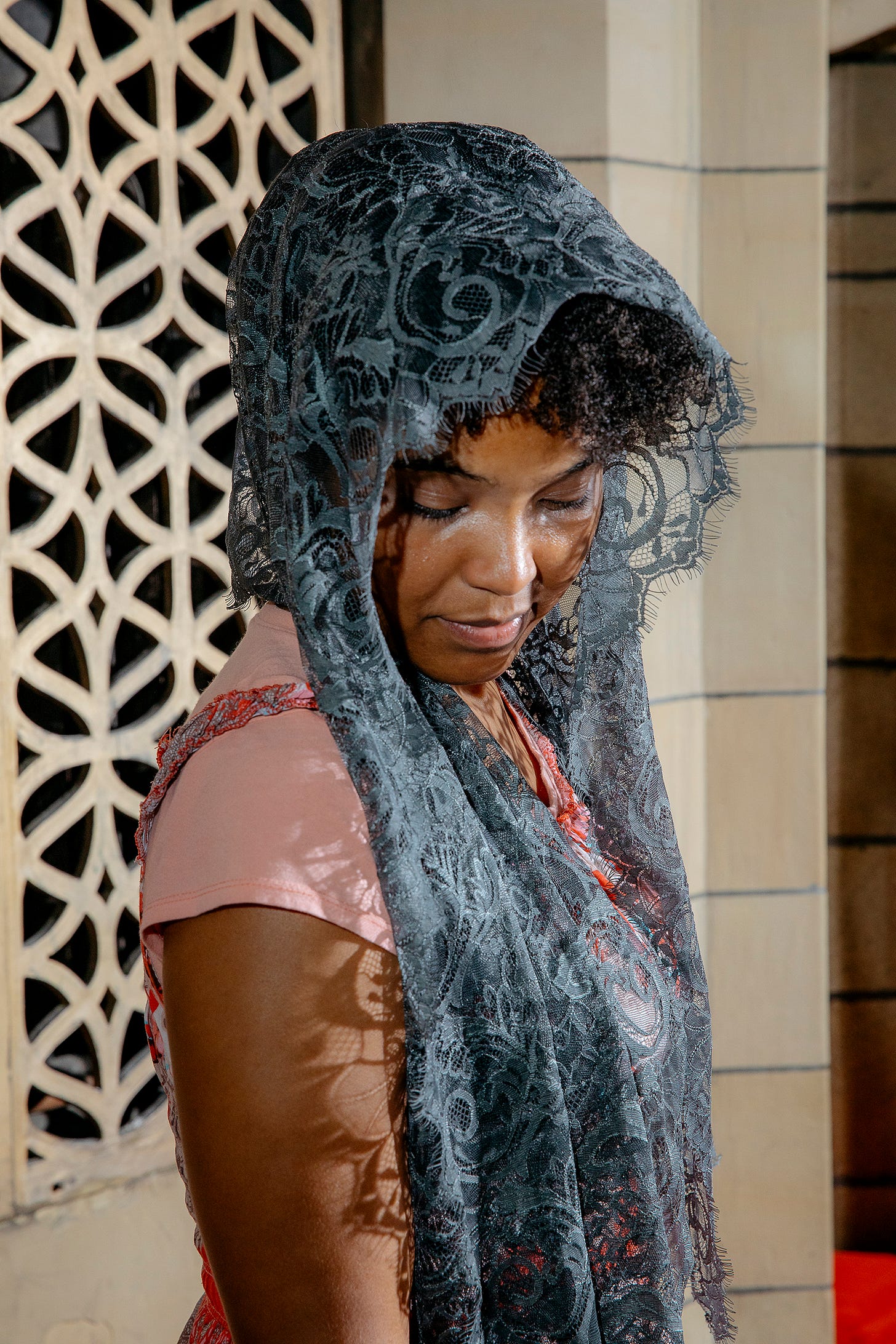
Ann Clare Levy, 28, of Virginia, is one of an increasing number of Catholics who are drawn to the forms of worship that were common before Vatican II. She tells me that veiling “just kind of fits this entire aesthetic” in parishes with Gothic and Baroque architecture, “which you don’t see in as many modern parishes.”
“When you have a parish that’s filled with women wearing these finely made pieces of lace, it’s beautiful to look at,” she says, and this “tangible beauty” is evocative of a “lost type of Catholicism.”
Some Catholics who want the church to move in a more progressive direction find these practices archaic, or even threatening.
When Patel, who always carries her veil in New York City, visited a less traditional parish near her family’s California hometown, she recalls the priest “glaring” at her throughout Mass. She was wearing her veil, of course. On another occasion, at a liberal parish in New York, a priest smiled and welcomed her two veil-less friends but greeted her with uncharacteristic coldness. Patel’s friends later suggested to her that the priest was put off by her veil.
“Wearing a veil is making a doctrinal statement,” one Catholic writes on Reddit. “And I don’t really believe any younger woman who wears a veil today is unaware of that, protestations about prettiness aside.”
Another Catholic, who recalls his mother and sisters veiling before Vatican II, writes that “all the women I know doing this now are rabid tradcaths with a holier than thou attitude.”
Some women, aware of such sentiments, worry that their veiling will send a message of moral superiority. “My main concern was that people would think that I was trying to be holier-than-thou,” Moore told me, referring to her early days of veiling. Kengor said it was part of her hesitation too. And one of the frequently asked questions on the Veils by Lily website is: “Shouldn’t I avoid drawing attention to myself at Mass?”
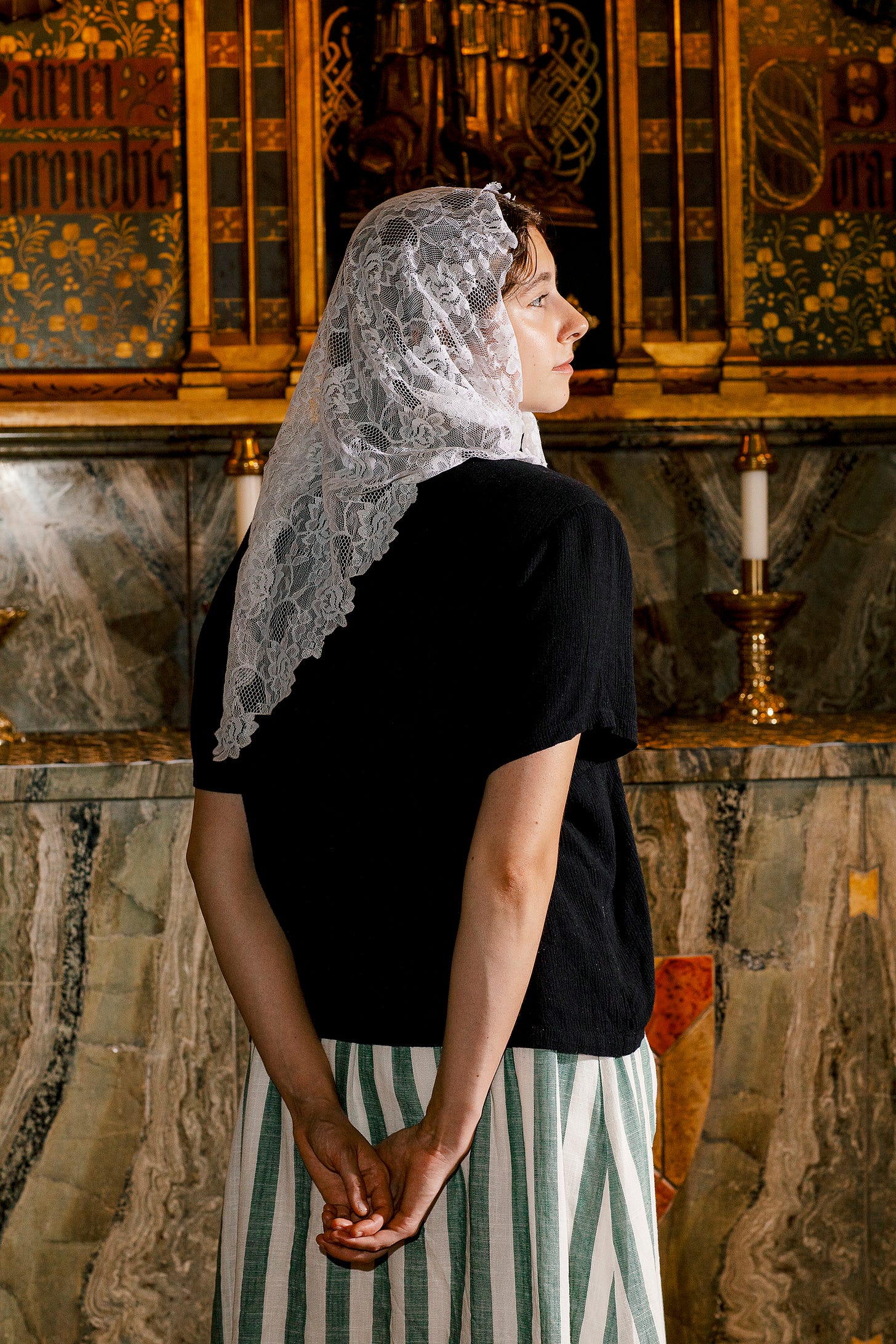
Patel said that while she regrets being misunderstood, in some cases, the characterization may be partly true. Bernadette explains that she “got really into the TLM” during the pandemic, but she noticed a tendency among some TLM Catholics “to think they were better than” those who attend the modern Mass. Though she disagrees with Pope Francis’s restrictions on the TLM, which she finds beautiful, she understands why the Pontiff is concerned about “a splintering of the church.”
Likewise, Madeline Wiseman, a 19-year-old Columbia student who grew up veiling, has become aware since starting college in New York, that many women at Mass “feel like they’re being personally judged by veil wearers.” While she would still “love to wear a veil,” she refrains from doing so to be “more approachable” to less traditional or even non-Catholic students who might be attending Mass.
She’s not the only woman who feels conflicted about wearing the veil. I spoke to another, who didn’t want to be named, who said she was “forced” to wear a mantilla growing up, which she says left her with a “little bit of a sour taste in my mouth.” Her family were part of a sect of hyper-traditionalist Catholics, the Society of St. Pius V, which questions the legitimacy of post–Vatican II popes.
Now 26, she attends the modern Mass in a Virginia parish where there is no pressure to veil. She still does “from time to time,” but is still “trying to decide for myself” how she feels about the practice. She wants to “dig into the 2,000-year history and beautiful scriptural meanings that are associated with it.”
“I’m trying to rediscover my true devotion for veiling,” she says.
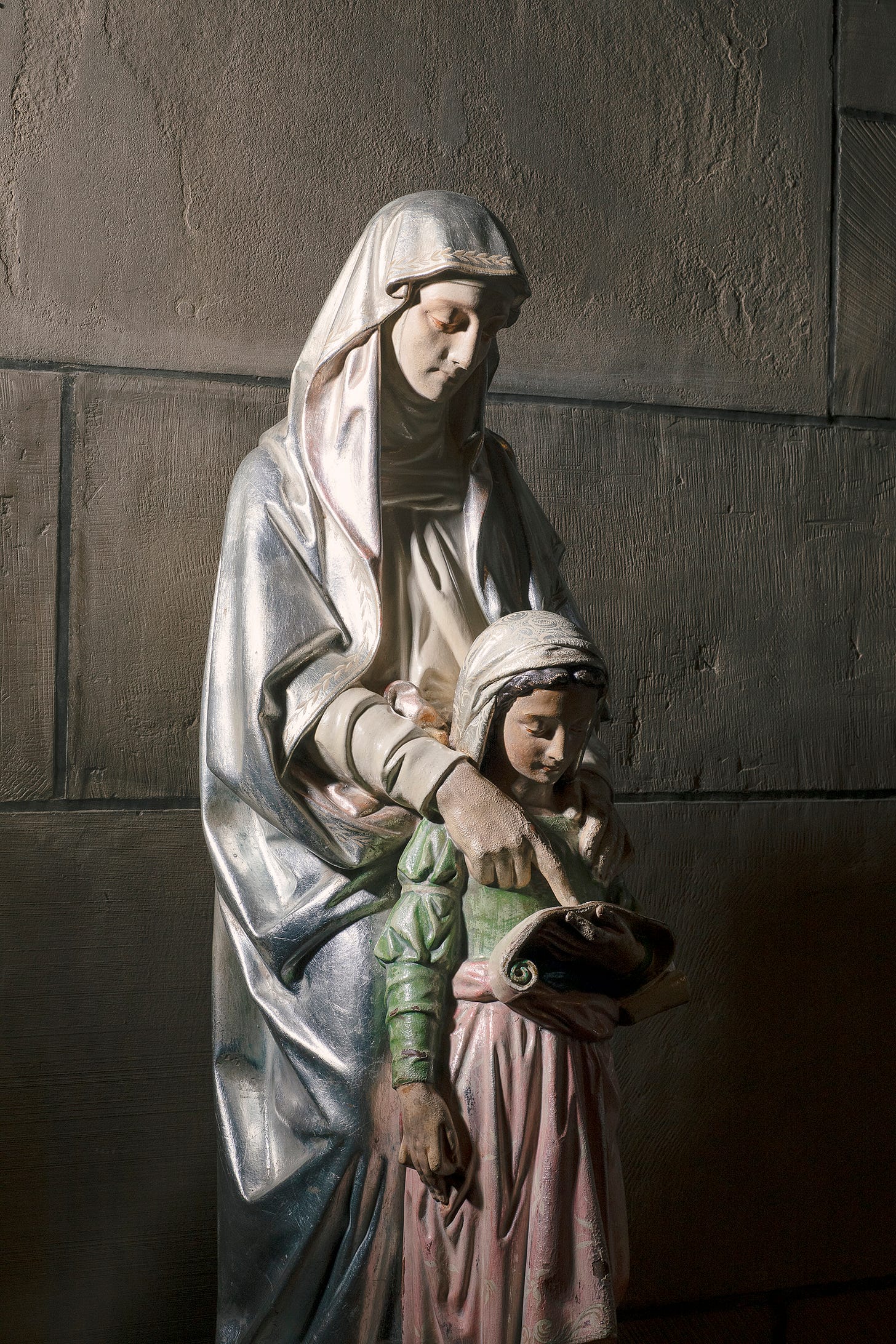
In Corinthians, men are instructed not to cover their heads. Scholars debate the passage’s precise meaning, but one theological explanation for the asymmetry lies in Christian symbolism: Women represent the church, the submissive bride to Christ, while men represent Christ, the self-sacrificing groom.
Among progressives, the veil, representing distinct gender roles, is sometimes interpreted as a sign of female subservience. One op-ed writer for the National Catholic Reporter argues that it is “backward, if not downright repressive.”
But the women I spoke to rejected comparisons to the hijab, arguing that the mantilla is not mandatory. The decision to wear one is and ought to be freely made. They also note that the veil is not worn in all public places, but simply in church, to signify a difference between sacred and non-sacred spaces.
“People dress beautifully to go see the King or Queen,” says Nicole LeBlanc, 25, from Michigan—so it should be with the Lord.
Kathleen Stenlund, 34, a doctor and mother of five who’s also based in Michigan, thought veiling was “demeaning” at first. She changed her mind after reading the late Belgian American philosopher and theologian Alice von Hildebrand, who criticized feminists for considering mantillas “a sign of [women’s] inferiority.”
“My goodness,” the theologian wrote, “how they have lost the sense of the supernatural.”
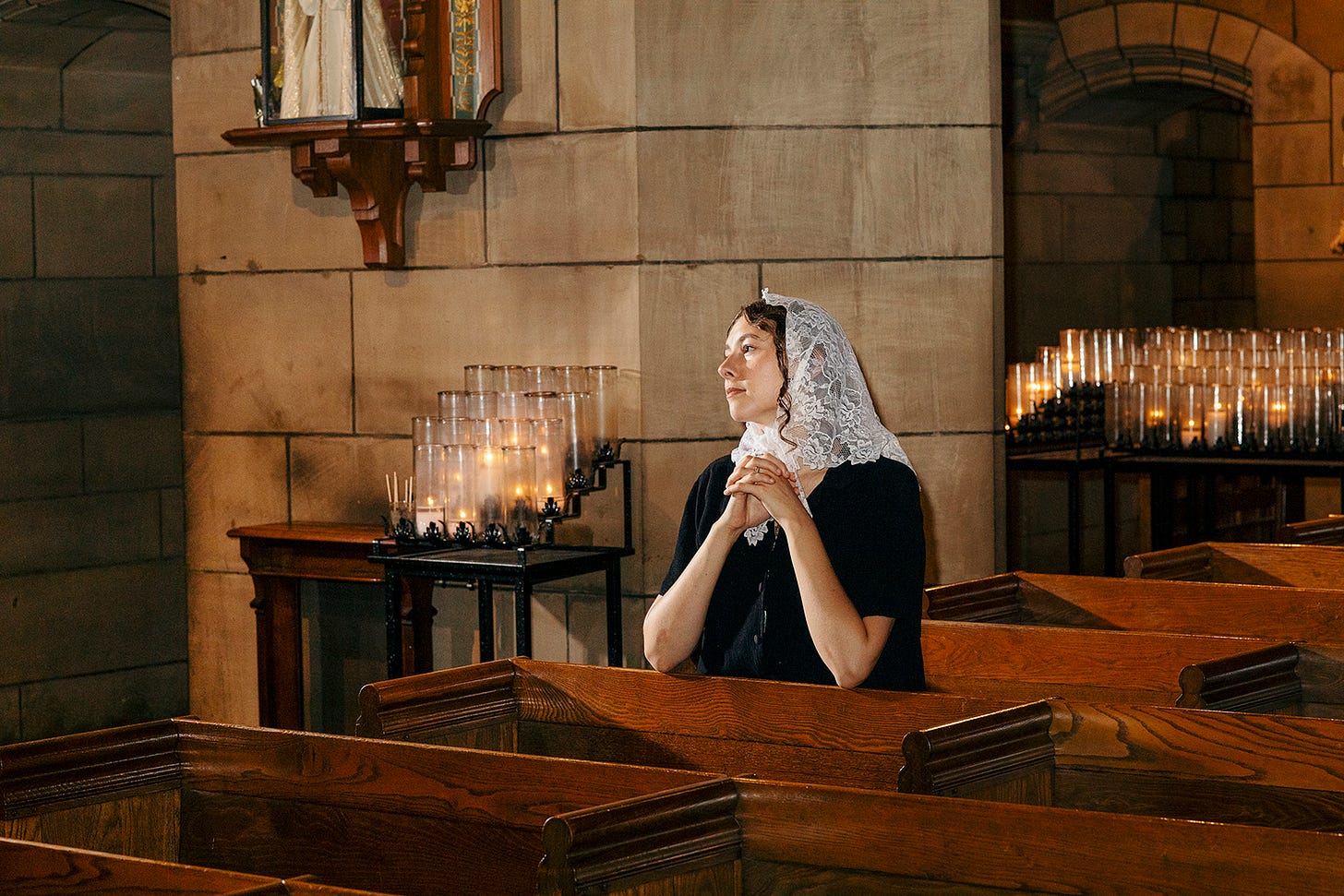
Von Hildebrand argues “whatever is sacred calls for veiling,” which includes the female body with its unique capacity to bear life. Reading her work, Stenlund came to believe that veiling signaled the glory of femininity—and adopted the practice. “The last God created was woman,” she says, “almost as if woman was his crowning creation.”
All the women I spoke to felt that the veil dignified them, and many say it helps them express their love for the Lord. Nicole Moore, from New York, put it best. For her, the veil has become a comforting accessory to prayer, and helps her connect to God.
“It’s like feeling I’m under a blanket,” she told me. “I can kind of shut other things out.”
Madeleine Kearns is an associate editor at The Free Press. Follow her on X @madeleinekearns.
To support The Free Press, become a subscriber today:

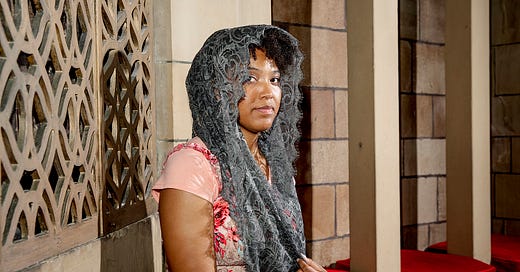


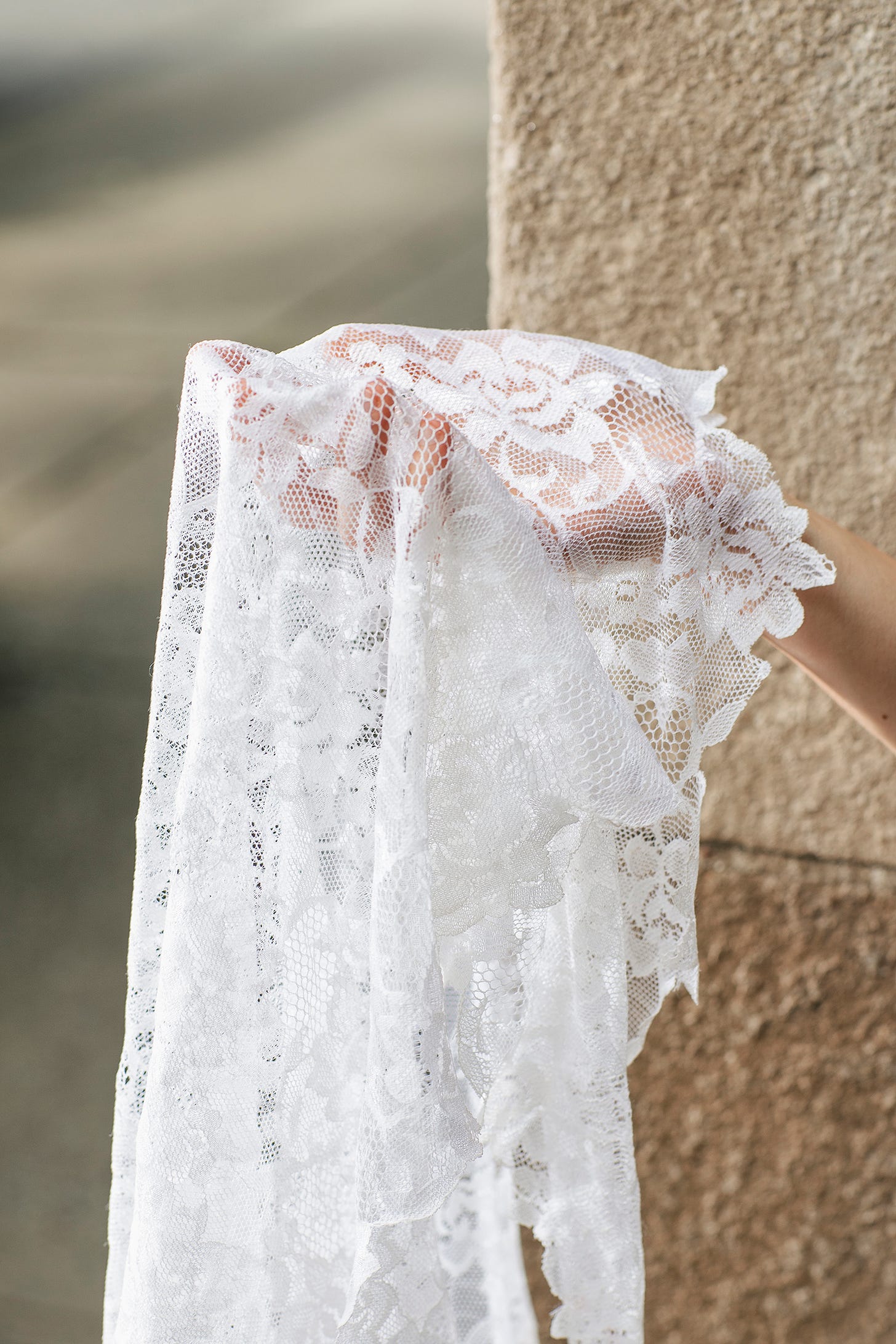

Madeleine, thank you for this story. I am a non-Catholic Christian, but still found it interesting. Also, this was journalism: you got perspectives from various points of view and I have NO IDEA where you stand on this issue. This is how it is supposed to be.
The more interesting trend to me is why these young women are attending the TLM. In 2020 my husband attended TLM in the Brompton Oratory in London where Latin Mass is sung twice a day Sunday through Friday and is more heavily attended than Traditional Mass. Full of families with young children and these families were well versed in the entire mass, many not needing the missal. The appeal of traditional Catholicism, pre-Vatican II needs to be better understood and written about. I for one am happy to see it.